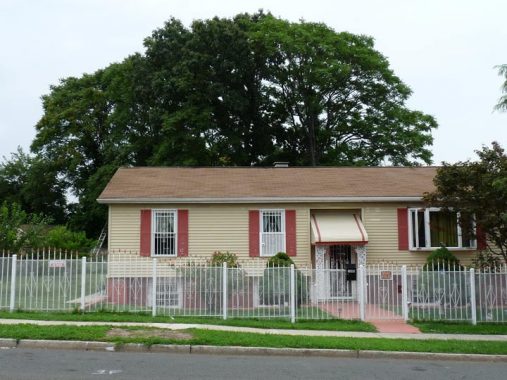
Charlotte Street, a three-block thoroughfare running from Crotona Park east across Boston Road to Jennings Street and Minford Place, was briefly the best-known, and most infamous, street in the Bronx in the late 1970s. The young Quaker lass named Charlotte Leggett would never know that by marrying into the prominent Fox landowning family in 1808, she would eventually have a short street in the immediate Crotona Park area named for her; apartment buildings housing middle-class workers would spring up; and that her street would decay and collapse into utter ruin before bouncing back to respectability.
The street became a microcosm of what was happening to the South Bronx in the 1960s and 1970s when the high cost of illegal drugs caused many to commit crimes to pay for their habit. Merchants, many of whom had been in business in the neighborhood for decades, and many residents moved out to escape the onslaught. Landlords found it was unprofitable to maintain their buildings when the junkies were trashing them. By 1970 half the families living on Charlotte were welfare families and monthly rents became hard to collect. After a while heat and hot water was not provided and some unscrupulous landlords turned to arson to force recalcitrant tenants out. That same year, over 4200 fires broke out on Charlotte, an average of eleven per day. It was a nightmarish scenario that saw most of the buildings on Charlotte burnt down or abandoned by the mid-1970s.
President Jimmy Carter was in New York to attend a United Nations session October 5, 1977, but his real mission had been cloaked in secrecy to all but his closest aides. Carter wanted to see for himself the devastation that had been wrought on Charlotte Street. His motorcade roared on streets that have almost never seen visits by mayors, much less Presidents: the Grand Concourse, East Tremont Avenue, and Third Avenue, whose El was so recently torn down; its burned-out buildings bore sheets of tin where the window glass used to be. The motorcade traveled down Claremont Parkway, at one time a genteel carriage road between the Bathgate and Zborowski estates; through Crotona Park, whose grand appointments were now rubble-strewn; and on Boston Road, conceived and built by Lewis Morris in the post-Revolutionary years as an alternative to the older Boston Post Road; and finally Charlotte Street. The massive Herman Ridder Junior High School loomed balefully over the rubble-strewn blocks, the school standing out now that mostly everything surrounding it had been lost.
A week after the President’s visit the Yankees opposed the Los Angeles Dodgers in the World Series at Yankee Stadium. The nation saw for itself the Bronx’ plight when between innings, ABC-TV cameras panned around on the numerous blazes visible in the night. “The Bronx is burning,” intoned Howard Cosell.
The south Bronx was slow to recover. The federal government promised only $55 million in the wake of Carter’s visit. In 1977, the crack and AIDS epidemics were yet to arrive. Drug overdoses and AIDS killed over 17,000 Bronxites between 1985 and 2000. But the seeds for Charlotte Street’s rebirth began to bear shoots in 1984 when Charlotte Gardens, a community of ranch houses, was constructed where all the old tenements had burned down. Applicants who could prove need were able to purchase new $52,000 three-bedroom houses. Soon, additional new housing sprouted on the battered streets to the south and east.
Today tree-lined Charlotte Street and its well kept ranch house stock bears no resemblance to the blasted vistas that President Carter, and successor Ronald Reagan, found when they visited it in the late 1970s and early 1980s.
Check out the ForgottenBook, take a look at the gift shop, and as always, “comment…as you see fit.”
1/12/21
